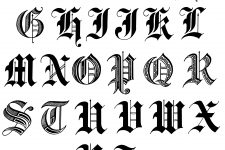

Jones" - "Jones ƿer" - "Jones the man", and "Mrs. title (not authentic historical practice), you could use the words "ƿer" (man) and "ƿīf" as titles, hence "Mr. "Hlǣfdiġe" was a title of respect of noble women. These words may not be in popular use today, but they have strongly influenced the way we speak in the 21st century. 1066), Old English literature introduced many classic words to the English language. During the Old English period (approximately A.D. There is no record of an equivalent to "Mr." or "Mrs." being commonly used, but a respectful form of address was "lēof", which could also be put in front of a name. 50+ Old English Words and Their Modern Meanings. Titles were used in Old English, and were usually put after the name: Sċyld (proper name) Sċēfinġ (patronymic, "the Sheafite/son of Sheaf").However, often they would have an extra part that would be added to their name, which was like a surname, or a nickname, and helped specify people: In Old English, people didn't have last names - not in the modern, formal, legal sense, anyway. John, how are you? (Sent) by Hrothgarįorms of address and titles - Hādas and titulas Iōhannes, hū eart þū? Of Hrōðgāre ġesended.There likely no or very few informal letters extant in OE, however, a modern informal style which imitates spoken speech could easily be developed: Relevant titles were usually included, hence, "x cyning grēt y munuc frēondliċe" - "King x greets the monk y amicably". A person of lower status would usually say "x grēt y ēadmōdliċe" - "x greets y humbly". Note that a superior would usually write "x grēt y frēondliċe" - "x greets y amicably/kindly". Iōhannes grēt Hrōþgār - John greets Roger.In formal letters, people would write both the recipient and the sender in the one opening sentence: Ƿē sindon ġesunde/Ƿē magon ƿel - We're well (for more than two people).Ƿit sindon ġesunde/Ƿit magon ƿel - We're both well.Hū sindon ġē?/Hū magon ġē - How are you? (to more than two people).Hū sindon ġit?/Hū magon ġē? - How are you? (to two people).Hū eart þū?/Hū meaht þū? - How are you? (to one person).It literally means "be well" - appropriate for a greeting, right? The phrases for "hello" and "goodbye" are the same in Old English. It used to be like this in Modern English - Shakespeare used "thou" and "thee" for one person Notice all the different forms for "hello"? It's because Old English often uses different forms of the same word for different genders.Īlso, notice that there are different forms for "you" for one person and "you" for more than one person. Farað ġesunde - farewell (to more than one person who is leaving).Ƿesaþ hāle - hello goodbye (to more than one person).Far ġesund - farewell (to a single person who is leaving).Ƿes hāl - hello goodbye (to one person).Ēalā, lā - yo, hey (used to catch someone's attention).Meeting and Greeting - Mētung and Grētungƿord Greetings -Grētungƿord 2.3 Forms of address and titles - Hādas and titulas.2 Meeting and Greeting - Mētung and Grētungƿord.


 0 kommentar(er)
0 kommentar(er)
